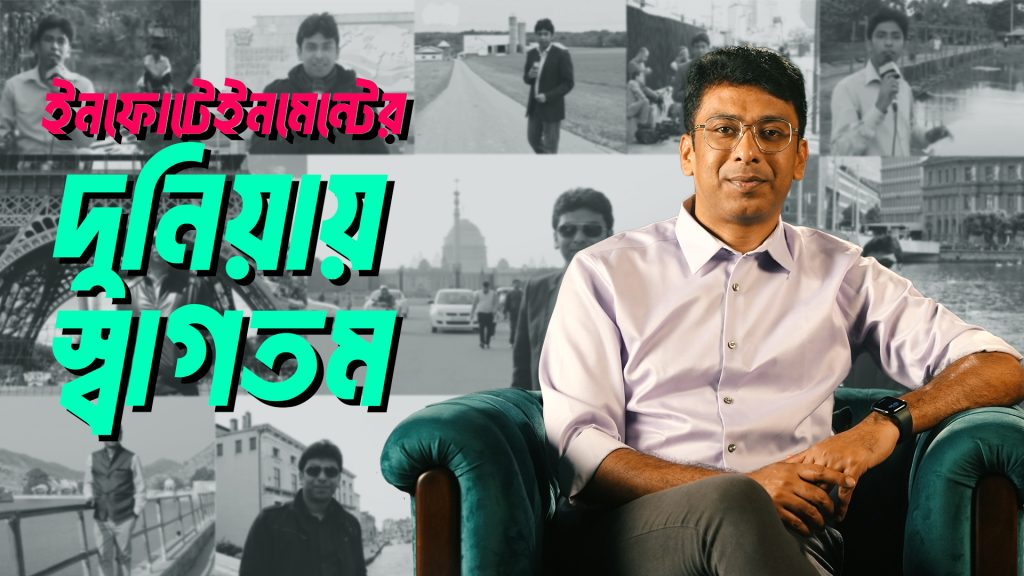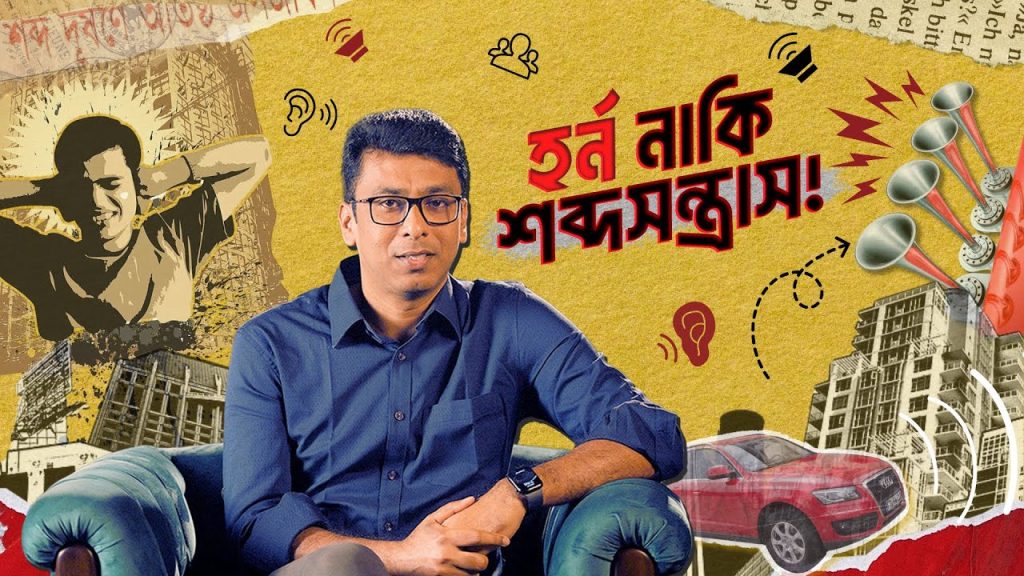১২ মার্চ ২০১৮। বাংলাদেশের রাজধানী ঢাকার শাহজালাল আন্তর্জাতিক বিমানবন্দর।
হ্যাঙ্গারে পার্ক করা বোম্বাডিয়ার ড্যাশ এইট কিউ ফোর হানড্রেড মডেলের ইউএস বাংলা এয়ারলাইন্সের প্লেন। এটি উড্ডয়নের প্রস্তুতি নিচ্ছে। ২০০১ সাল থেকে যাত্রী পরিবহন করে আসা প্লেনটির এবারের গন্তব্য নেপালের ত্রিভূবন বিমানবন্দর। ফ্লাইটটির নাম দেয়া হয়েছে বিএস- টু ওয়ান ওয়ান।
ঘড়িতে তখন দুপুর ১২ টা ২১ মিনিট। রানওয়ে থেকে টেক অফ করলো ফ্লাইট বিএস- টু ওয়ান ওয়ান। সবকিছু ঠিকঠাক। ফ্লাইটের যাত্রীরা বেশ খোশ মেজাজে যাত্রা উপভোগ করছে। ফ্লাইটে চার ক্রুসহ যাত্রী ছিলেন ৭১ জন।
প্লেনটি চালাচ্ছিলেন ৫২ বছর বয়সী ক্যাপ্টেন আবিদ সুলতান। ঝুলিতে আছে ২২ বছরের বিমান উড়ানোর অভিজ্ঞতা। পাইলট হিসেবে কাজ করেছেন বাংলাদেশ বিমান বাহিনীতেও। ইউএস বাংলার বিমান চালাচ্ছেন ২০১৫ সাল থেকে। তিনি একজন প্রশিক্ষকও বটে। ঢাকা থেকে কাঠমান্ডুতে একশোবারের বেশি গেছেন বিমান চালিয়ে। তাই ৯০ মিনিটের ছোট এই ফ্লাইট বলতে গেলে তার কাছে ছিল মামুলি ব্যাপার।
একটা কথা আগে থেকেই জানিয়ে রাখি, ক্যাপ্টেন আবিদ সুলতান নেপালে যাওয়ার আগেই চাকরি থেকে ইস্তফা দিয়েছিলেন। কিন্তু তা অ্যাকসেপ্ট না হওয়ায় এই ফ্লাইটটি পরিচালনা করতে হচ্ছে তাকে।
ইউএস বাংলার এই ফ্লাইটে পাইলট আবিদ সুলতানের সাথে ছিলেন ফার্স্ট অফিসার পৃথুলা রশীদ। তার বয়স ২৫ বছর। ইউএস বাংলা এয়ারলাইন্সের প্রথম নারী পাইলট তিনি। ৩৯০ ঘন্টা বিমান উড়ানোর অভিজ্ঞতা থাকলেও নেপালে এটি তার প্রথম ফ্লাইট।
সে যাই হোক, ফ্লাইট টু ওয়ান ওয়ান বেশ ভালোভাবেই নেপালের কাঠমান্ডুর ত্রিভূবন আন্তর্জাতিক বিমানবন্দরে নামার জন্য প্রস্তুতি নিচ্ছে। এরই মধ্যে ১৩ হাজার ফুট থেকে ধীরে ধীরে নীচের দিকে নামছে প্লেনটি। এয়ার ট্রাফিক কন্ট্রোলের পক্ষ থেকে ফ্লাইটটিকে বিমানবন্দরের 02 নাম্বার রানওয়েতে ল্যান্ড করার ক্লিয়ারেন্স দেয়।
নির্দেশনা পেয়ে ল্যান্ডিংয়ের জন্য অটো পাইলট মুড অন করেন ক্যাপ্টেন আবিদ সুলতান। দক্ষিণ দিক থেকে 02 নাম্বার রানওয়েতে ল্যান্ড করার আগেই বিমানটি বামদিকে সরে যায়। তবে কী অটো পাইলট মুড ঠিকমতো কাজ করেনি? নাকি প্রোগ্রামিংয়ে কোন ত্রুটি ছিলো? এসব প্রশ্নের উত্তর খোঁজার সময়ও তখন ছিলো না।
এমন সময় পাইলটকে বলতে শোনা যায়, তিনি রানওয়ে দেখতে পাচ্ছেন না।
ততক্ষণে প্লেনটি রানওয়ের উপর দিয়ে পাহাড়ের দিকে যেতে লাগলো।
ঠিক সেই মুহুর্তে কাঠমান্ডু এয়ার ট্রাফিক কন্ট্রোল রুম থেকে আবারও সুপারভাইজারের কল। সুপারভাইজার ফ্লাইট ২১১ কে বামদিকে টার্ন করিয়ে উত্তরদিক থেকে রানওয়ে 20 তে ল্যান্ড করার ক্লিয়ারেন্স দেন। কিন্তু প্লেনটি টার্ন নিয়ে 20 রানওয়েতে ল্যান্ড করার পরিবর্তে ল্যান্ডিং লাইন থেকে সরে যাচ্ছিলো। কন্ট্রোল রুম থেকে বারবার সতর্ক করা হয় ফ্লাইট ২১১ কে। ওপাশ থেকে পাইলটের বক্তব্য ছিলো তারা রানওয়ে দেখতে পাচ্ছেন না। তখন রীতিমতো তোলপাড় শুরু হয় কন্ট্রোল রুমে।
কিছু সময় পর কো-পাইলট পৃথুলা কন্ট্রোল রুমকে জানান রানওয়ে দেখতে পাওয়ার কথা। কন্ট্রোল রুম থেকেও ক্লিয়ারেন্স দেয়া হয়। কিন্তু পাইলট যে রানওয়েতে প্লেন টি ল্যান্ড করাতে যাচ্ছেন সেটি ছিলো আসলে ট্যাক্সি ওয়ে। বিষয়টি বুঝতে পেরে একেবারে শেষ মুহুর্তে কন্ট্রোল রুম থেকে পাইলটকে ল্যান্ড করাতে নিষেধ করা হচ্ছিলো। কিন্তু তখন হাতে পর্যাপ্ত আর সময় ছিলো না। কন্ট্রোল টাওয়ারের গা ঘেষে উড়ে যায় বিমানটি। তখন চেষ্টা করেও প্লেনটিকে নিয়ন্ত্রণ রাখতে পারেনি পাইলট। 20 রানওয়ে থেকে ৪৪০ মিটার দূরে প্লেনটি বিধ্বস্ত হয়। মাটি স্পর্শ করার মাত্র ছয় সেকেন্ডের মাথায় প্লেনে আগুন ধরে যায়।
এই দুর্ঘটনায় পাইলট, কো-পাইলটসহ মারা যান ৫১ জন। বেঁচে ফিরেছেন মাত্র ২০ জন। তার মধ্যে নেপাল, বাংলাদেশ এবং কানাডার নাগরিক ছিলেন।
ত্রিভুবন আন্তর্জাতিক বিমানবন্দরে এই দুর্ঘটনা ছিল ১৯৯২ সালের পর নেপালের সবচেয়ে ভয়াবহ প্লেন দুর্ঘটনা। বিধ্বস্ত হওয়ার কারণ খুঁজে বের করতে গঠন করা হয় তদন্ত কমিটি।
দুর্ঘটনার জন্য নেপালের তদন্ত কমিটি তাদের প্রতিবেদনে পাইলটকে বেশি দায়ী করে। বলা হয়, পাইলট মানসিক চাপের মধ্যে ছিলেন। নিয়ম না মেনে ককপিটে বসে সিগারেট খাচ্ছিলেন। বিমান নিয়ন্ত্রণ কেন্দ্রের নির্দেশনা না মেনে বিমানটিকে অবতরণ করিয়েছেন। এসব অভিযোগ আসলেই কি সত্যি?
নেপালের এই তদন্ত রিপোর্ট নিয়ে অন্য কথা বলছে বাংলাদেশ সিভিল এভিয়েশন। তাদের বক্তব্য, পাইলটকে একতরফা দায়ী করা হয়েছে এই রিপোর্টে। কিন্তু এয়ার ট্রাফিক কন্ট্রোলের যে ত্রুটি ছিল সেগুলো উঠে আসেনি এখানে। বাংলাদেশের পক্ষ থেকে এই তদন্ত কমিটিতে থাকা ক্যাপ্টেন সালাহউদ্দিন রহমতুল্লাহ তো সরাসরি প্রেস কনফারেন্সেই বলে ফেলেছেন, একজন পাইলট ভুল করতেই পারেন। পাইলটের ভুল শোধরানোর জন্য উড়োজাহাজ নিয়ন্ত্রণ কেন্দ্র আছে। তারা সার্বক্ষণিক তদারকি করে। কিন্তু নেপালের নিয়ন্ত্রণ কেন্দ্র পাইলটের ভুল শোধরানোর জন্য কোনো ভূমিকাই পালন করেনি। পরস্পরকে দোষারোপের মধ্যেই আটকে যায় এই দুর্ঘটনার আসল রহস্য উন্মোচনের চেষ্টা। নেপালের তদন্ত কমিটির রিপোর্টের পর এ নিয়ে আর কোন তদন্ত হয়নি। নেয়া হয়নি কোন ব্যবস্থা।
২০১৮ সালেই দুর্ঘটনায় বিধ্বস্ত উড়োজাহাজের জন্য বিমা কোম্পানির কাছ থেকে সাত মিলিয়ন ডলার ক্ষতিপূরণ পায় ইউএস বাংলা। সেনাকল্যাণ ইন্সুরেন্স কোম্পানি থেকে ক্ষতিপূরণ পায় আহত ও নিহত যাত্রীদের পরিবার।
সময় অনেক পেরিয়ে গেলেও সেইদিনের দুঃসহ স্মৃতি এখনো ভুলতে পারেননি রিজওয়ানুল হক, ইমরানা কবির, কবির হোসেন, মেহেদী হাসান, শাহরিন আহমেদসহ প্রাণে বেঁচে যাওয়া অন্যরা।
যে যাই বলুক, ‘হিমালয়কন্যা’ খ্যাত নেপালে একের পর এক প্লেন দুর্ঘটনার দায় কী ইশারা করে? ইউএস বাংলার ক্ষেত্রে না হয় পাইলটের দোষ বেশী মেনে নিলাম। কয়েক বছর পরপর এমন সব মর্মান্তিক দুর্ঘটনায় কতটুকু সচেতন হয়েছে নেপাল? পাহাড়ি দুর্গম এলাকা আর বৈরী আবহাওয়ার দোহাই দিয়ে বারবার নেপাল পার পেয়ে যাচ্ছে না তো? প্রশ্নটা আপনাদের কাছেই রেখে গেলাম।
পরিসংখ্যান বলছে, দেশে-বিদেশে বাংলাদেশি যাত্রীবাহী প্লেন দুর্ঘটনা অন্তত ৩৫টি। প্রথম বড় দুর্ঘটনা ঘটেছিলো ১৯৮৪ সালে। সেটা ছিলো ঢাকায়। বাংলাদেশ বিমানের ওই দুর্ঘটনায় প্রাণ হারায় ৪৫ জন আরোহী। ইউএস-বাংলা এবং বাংলাদেশে বিমানের এই দুইটি দুর্ঘটনা ছাড়া আর কোন বাংলাদেশি যাত্রীবাহী প্লেনে প্রাণহানির ঘটনা ঘটেনি।
প্লেন দুর্ঘটনায় মানুষের বাঁচার চান্স নাই বললেই চলে। তারপরও কিছু কিছু ঘটনা এতোটাই অবাক করা, যা অনেক সময় সিনেমার গল্পকেও হার মানায়।
এমন একটি ঘটনা ঘটেছিলো ১৯৭২ সালের ১৩ অক্টোবর। ৪০ জন যাত্রী এবং ৫ জন ক্রু নিয়ে উরুগুয়ের রাজধানী মন্টেভিডিও থেকে রওনা হয়েছিল চার্টার্ড প্লেন উরুগুয়ান এয়ার ফোর্স ফ্লাইট 571. গন্তব্য চিলির রাজধানী স্যান্দিয়াগো। উড্ডয়নের কিছু সময় পরেই প্লেনটি আন্দিজ পর্বতে ভেঙে পড়ে।
ভয়াবহ ওই দুর্ঘটনায় যাঁরা বেঁচে গিয়েছিলেন, তাঁদের উদ্ধার করা হয়েছিলো ৭২ দিন পর। খেয়ে না খেয়ে মাইনাস ৩০ ডিগ্রি তাপমাত্রা সহ্য করে বেঁচে ছিলেন তারা। অথচ গোটা বিশ্বই ধরে নিয়েছিলো, আন্দিজ পর্বতে বিমান ভেঙে পড়ায় তাঁরা কেউই আর বেঁচে নেই।
এমন সব প্লেন দুর্ঘটনা নিয়ে প্রচুর জনপ্রিয় মুভি-সিরিজও হয়েছে। একবিংশ শতাব্দীর সবচেয়ে সম্ভাবনাময় সিরিজ বলা হয়- লস্ট সিরিজকে, এটিও বিমান দুর্ঘটনা নিয়ে বানানো। বোঝাই যাচ্ছে, বিমান দুর্ঘটনা মানুষকে ভীষণভাবে নাড়া দেয়। কিন্তু সত্যিকারের বিমান দুর্ঘটনা যে কতটা ভয়াবহ হতে পারে, তা নিশ্চয়ই এতক্ষণে আপনারা আন্দাজ করতে পারছেন। অনেকক্ষেত্রে তা সিনেমার চেয়েও বেশি নাটকীয় ও মর্মান্তিক হয়ে ওঠে।
মনে রাখবেন, বিমানে উঠে বসার পর আমাদের হাতে তেমন কিছুই করার থাকে না। তাই বিমানের টিকেট কাটার আগে অন্তত বিমান কোম্পানিটির যাবতীয় রেকর্ড, রিভিউ চেক করে নিয়ে আরো একটু সচেতন আমরা থাকতেই পারি। আর কোন জীবন ঝরে না পড়ুক অনাকাঙ্খিত কোনো দুর্ঘটনায়।
ধন্যবাদ সবাইকে।
সুস্থ থাকুন, ভালো থাকুন।
US-Bangla Plane Crash
March 12, 2018. Shahjalal International Airport in Dhaka, Bangladesh.
A US-Bangla Airlines plane, a Bombardier Dash 8 Q400, sat parked in the hangar, readying for takeoff. This plane, which had been carrying passengers since 2001, was now bound for Nepal’s Tribhuvan Airport. It was named Flight BS-211.
At 12:21 PM, Flight BS-211 took off from the runway. Everything seemed normal, and the passengers were in good spirits. The flight carried 71 people, including four crew members.
Captain Abid Sultan, aged 52, piloted the plane. With 22 years of flying experience and a background in the Bangladesh Air Force, he had been flying for US-Bangla since 2015. He was also a flight instructor and had made over a hundred trips from Dhaka to Kathmandu. For him, this 90-minute flight was routine.
It’s important to note that Captain Abid had already resigned before this trip to Nepal, but since his resignation hadn’t been accepted, he had to operate the flight. Alongside him was First Officer Prithula Rashid, aged 25, US-Bangla’s first female pilot. Though she had 390 flight hours, this was her first trip to Nepal.
Flight BS-211 began preparing for its landing at Kathmandu’s Tribhuvan International Airport. The plane descended gradually from 13,000 feet. Air Traffic Control (ATC) cleared it to land on runway 02. Captain Abid engaged the autopilot mode for the landing, but before reaching runway 02 from the south, the plane veered left. Did the autopilot malfunction? Or was there a programming error? There wasn’t much time to figure it out.
Captain Abid reported that he couldn’t see the runway. Meanwhile, the plane flew over the runway toward the hills. Just then, the ATC supervisor called again, instructing Flight 211 to turn left and land from the north on runway 20. Instead of aligning with runway 20, the plane drifted off course. The control room repeatedly warned Flight 211, but the pilot insisted that they couldn’t see the runway. Panic began to spread in the control room.
After some time, Co-pilot Prithula informed ATC that they had visual contact with the runway, and ATC gave clearance. However, the plane was heading towards a taxiway, not the runway. ATC quickly advised against landing, but it was too late. The plane flew past the control tower, and despite the pilot’s efforts, control slipped away. The aircraft crashed 440 meters from runway 20. Within six seconds of hitting the ground, the plane caught fire.
The crash claimed the lives of 51 people, including the pilot and co-pilot. Only 20 people survived, among them citizens of Nepal, Bangladesh, and Canada. The crash marked the worst aviation disaster in Nepal since 1992. A committee was formed to investigate the cause.
The investigation by Nepal’s committee blamed the pilot, citing stress and cockpit smoking violations, and claimed he ignored ATC instructions. But were these accusations true? Bangladesh’s Civil Aviation had a different perspective, stating that the report unfairly targeted the pilot. They noted flaws in the air traffic control system that the report overlooked. Captain Salahuddin Rahmatullah, a Bangladeshi representative in the investigation, openly stated that pilots can make mistakes, but it’s the duty of ATC to correct them. In this case, Nepal’s ATC failed to intervene. The quest to uncover the real reason behind the crash got stuck in a blame game, and no further investigation or action followed.
In 2018, US-Bangla received $7 million in compensation from the insurance company for the crashed aircraft. Families of the injured and deceased passengers were also compensated by Sena Kalyan Insurance Company.
Even after all this time, survivors like Rizwanul Haque, Imrana Kabir, Kabir Hossain, Mehedi Hasan, and Shahreen Ahmed still struggle with the haunting memories of that day. Regardless of the conclusions, what do repeated plane crashes in Nepal point to? We may accept the pilot’s blame in the US-Bangla case, but what about the recurring tragedies every few years? How much has Nepal improved? Are they escaping responsibility by blaming the mountainous terrain and harsh weather?
I leave this question to you.
Statistics show at least 35 crashes involving Bangladeshi passenger planes both at home and abroad. The first major incident happened in 1984 in Dhaka, where a Bangladesh Biman crash killed 45 people. Apart from the US-Bangla and Biman incidents, no other Bangladeshi passenger flights have resulted in fatalities.
Surviving a plane crash is rare, yet some incidents defy belief, almost surpassing movie plots. One such case occurred on October 13, 1972. Uruguayan Air Force Flight 571, a chartered plane with 40 passengers and five crew, took off from Montevideo, Uruguay, headed for Santiago, Chile. Shortly after takeoff, the plane crashed in the Andes Mountains.
Survivors were rescued 72 days later, enduring minus 30-degree temperatures with little to no food. The world had assumed no one survived the crash in the Andes.
Many popular movies and series revolve around plane crashes, such as the series “Lost,” considered one of the most promising of the 21st century. Clearly, aviation disasters profoundly affect people. By now, you may grasp just how horrific real-life plane crashes can be, sometimes even more dramatic and heartbreaking than movies.
Remember, once we board a plane, we have little control. So before booking a flight, it’s wise to check the airline’s records and reviews for safety. Let’s hope no more lives are lost to unexpected tragedies.
Thank you. Stay healthy, stay happy.



“I agree with your points, very insightful!”
Baddiehub Pretty! This has been a really wonderful post. Many thanks for providing these details.
Noodlemagazine Very well presented. Every quote was awesome and thanks for sharing the content. Keep sharing and keep motivating others.